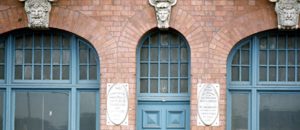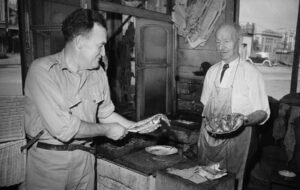In years gone by many workplaces published their own in-house magazines and newsletters. From the biggest corporations to quite small regional businesses, organisations produced these staff journals and company magazines to foster morale among employees and to help promote an image of good corporate citizenship.
These days such material – where it exists at all – is generally published online, saving the cost of paper, printing and distribution.
As for the vast array of publications generated in the past, it’s fair to say that only a relatively small proportion remains in existence, often stuffed in drawers, trunks or boxes in family homes, waiting for day when somebody either throws them away or decides to save them as curiosities for another generation.


For those with an interest in social and local history, these items can be valuable sources of information. I’ve written, for example, about Bank Notes, the excellent and very long-running staff journal of the Commonwealth Bank of Australia. Bank Notes contains fascinating insights into the role of banking in local communities in years gone by, as well as a surprising array of non-banking content, including detailed articles about industries and business and some wonderful photographic features, generally reproduced in high quality. For those, like myself, interested in Newcastle and the Hunter, the amount of content from these areas is gratifying.
Newcastle, as a former industrial centre of considerable national importance, hosted many businesses that produced their own journals. Many of these are obscure and hard to find, but some are relatively common. One good example is BHP Review – which appears to have begun its life in the 1920s as The BHP Recreation Review. While the publication focuses on company matters it also contains a lot of other material, almost invariably including items of great interest to those with an eye for Newcastle history. Wartime issues are especially interesting, with a lot of excellent contemporaneous reportage of Australia’s war effort, as seen through the eyes of a deeply involved industrial organisation.




Most in-house publications tended to restrict their content to workplace commentary – particularly about safety matters – and to “gossip” about the achievements and activities of employees. The Stewarts and Lloyds Recreation News, for instance, speaks mostly of the sporting and social events organised by and for employees across the company’s Australian sites. Since my father worked at Stewarts and Lloyds in the mid-1960s I keenly peruse any issues of this publication I find in my travels, and have been rewarded with some excellent photos of my father, my mother and even my infant self on its well-produced pages.


The Masonite factory, near Raymond Terrace, called its in-house journal Gun Shots. I didn’t know where the name came from until correspondent Lyall Cussler explained: “The Masonite wallboard product is produced by heating billets (logs cut to short lengths) under steam pressure to explode the timber into a fine fibrous state, then able to be treated and compressed into various types of wallboard, including the “tempertile” category still being produced today under new ownership. The “explosion” was known as a “shot,” hence the magazine name. The sound was considerable, and was a familiar part of everyday (and night) living for Raymond Terrace people. Modern technology has changed this as no such sounds are heard today.”
Newcastle State Dockyard’s staff journal was called Shipshape, and the first issue appeared in December 1955.






Other journals I’ve noted include some produced by the corporate players in the petroleum industry. The Accelerator, for example, is the “House organ of The Commonwealth Oil Refineries Ltd”, Vacuum News was produced by The Vacuum Oil Company Pty Ltd, as was its sister publication Vacuum Country Journal. Mobil also had its own “Country Journal”, and these publications – which contained a wide range of general interest reading matter – were directed mostly at potential customers in rural industries. Atlantic Magazine – a very high-quality publication – was produced by the Atlantic Union Oil Company.



Automotive spare parts business Smith, Sons and Rees Pty Ltd produced a surprisingly polished magazine called The Modern Motorman, again packed with fascinating period advertisements, cartoons and photo features – presumably designed to appeal to mechanics and repair shops across the country.
I’ve only scratched the surface of a big subject here,




Thank you Greg for alerting us to this resource. I am curious to know if NESCA published such a journal. I am aware of some family members who worked at various jobs for many years at NESCA. Some additional information would as you have discovered embellish family history .
I think I might have some Nesca newsletters somewhere. I will have a look.
The Masonite wallboard product is produced by heating billets (logs cut to short lengths) under steam pressure to explode the timber into a fine fibrous state, then able to be treated and compressed into various types of wallboard, including the “tempertile” category still being produced today under new ownership. The “explosion” was known as a “shot,” hence the magazine name. The sound was considerable, and was a familiar part of everyday (and night) living for Raymond Terrace people. Modern technology has changed this as no such sounds are heard today.
Thanks very much Lyall 🙂